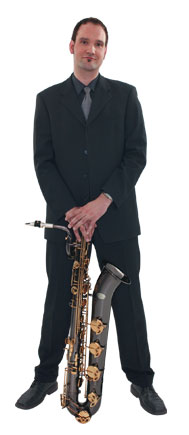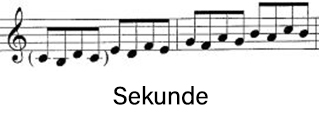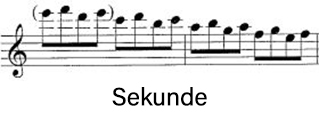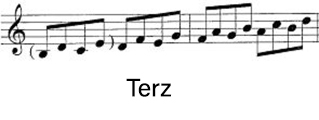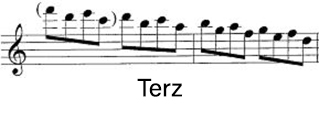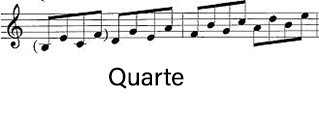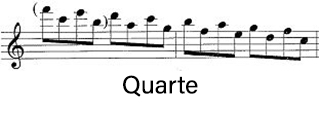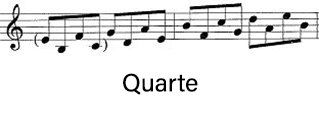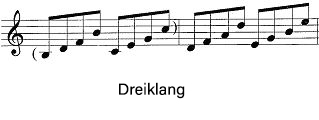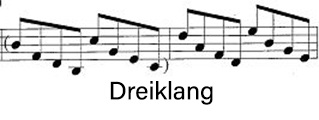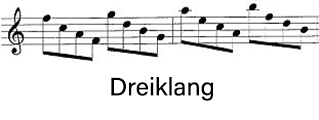Saxophone and technology
There are several methods to combine the saxophone play and the topic of technology. Technology can be found on the instrument and makes sure that it works (mostly). But it is also responsible for making it hearable – herein, the sound technology with its aspects of making and recording come into play. In this workshop, the playing technique should be highlighted, though.
Movement (motor skills)
Rhythmic accuracy is an essential requirement for a good playing technique. It presumes a certain basic rhythmic understanding but it also has to be performed very exactly through finger movements. So, on the one hand, motion sequences have to be practiced. They represent the tone sequences that are played. These tone sequences, on the other hand, are the result of the tone material - the tonality and the harmonic scheme- the musical piece is based on. Equally important is the rhythmic accuracy the tone sequences are played with. There has to be a training schedule and ours is called: PRACTICING!
Practice is the key
Technical skills don't come out of nowhere. They have to be achieved hardly. The way that leads to those skills, is called practice.
If there is a main difference between professional musicians and hobby musicians, it is probably that the professional players have probably spent countless hours with practicing.
To make the practicing time a productive one and not a waste of time, there are certain principles that have to be kept in mind:
- Practicing can be boring, just like the regular training in sports. That's why a unit of practice should always contain a playing part so that the music itself doesn't miss out. On the other hand, a pure playing unit doesn't replace the practice unit! It is always good to grab your instrument once in a while and simply „jam around“ but unfortunately, it does not replace the practice itself.
- Practice has to be performed carefully and in a concentrated way. It is important to avoid mistakes as much as possible! If I practice a difficult passage and make a mistake, try again and make the mistake again, I already practiced a mistake twice! Very important: practice correctly!
Only play as fast as you are able to perform the exercise and make as many repetitions as needed: definitely more than three! By the way, the repetitions just counts from the point where you play without mistakes. Take your time, sometimes you even have to sleep on it for a night.
- Break complex exercises into several parts – this doesn't only simplify the exercise itself but also trains the musical understanding.
- Use technical help: Metronome and tuner have to be your standard equipment!
But also playback CDs and a recorder for self-recording and control are very useful.
Let's go!
To improve your motor skills and playing technique, scale exercises are an ideal help.
The finger's flexibility is trained equally and in a controllable manner through a simple eighth rhythm. At the same time, the interval exercises give you more security when handling the audio material of a certain key.
I combined some simple explanatory exercises with the C major key.
- Only the first few measures are shown, so you have to take a close look at the exercise and to think about how it might continue.
- Use a metronome or an equally reliable clock generator – it can even be a program on your computer.
- Start slowly, so the entire exercise can be played through in the same speed.
- Increase the speed only as fast as you can play the exercise easily and for self-control reasons, note the highest speed. Like this, next time you know how fast you're already able to play.
- Put all the keys together (even minor) and draw lots for the next key to play.
Final words
I'd be very happy and treat it in my next article.
… wishs you a lot of fun with it.
Who wants to take a closer look at the topic of finger practice, can find real finger exercises in:
„H. Klosé: Études Pour Saxophones – 25 Études De Mécanisme: Alphonse Leduc, Paris“
For exercises to improve timing and rhythm, you should take a look at Thorsten Skringer's examples:
"Thorsten Skringer: Sax Clinics - der Weg zum perfekten Rhythmusgefühl, PPV Medien".
PS: Unfortunately, in this workshop, we are not able to treat the broad area of sound technology with microphones, effects, recordings etc, that treat the requirements of wind players. If you're interested in this topic, simply send a short e-mail to: JAY@remove-this.jupiter.info
I'd be very happy and treat it in my next article.
… wishs you a lot of fun with it.

